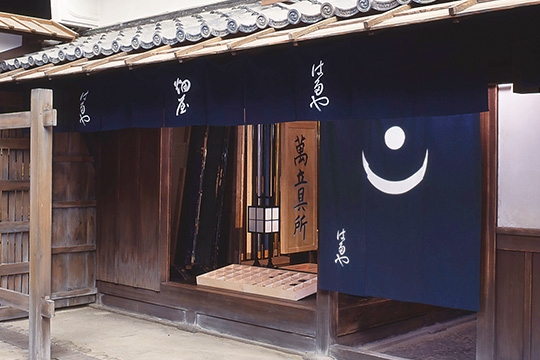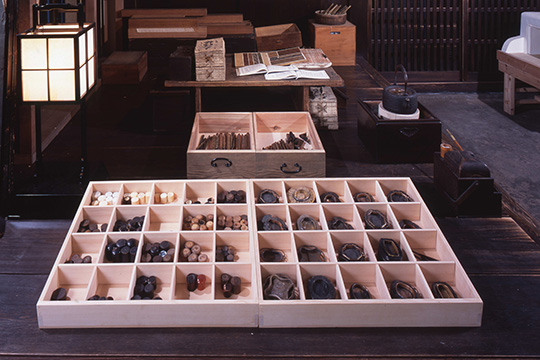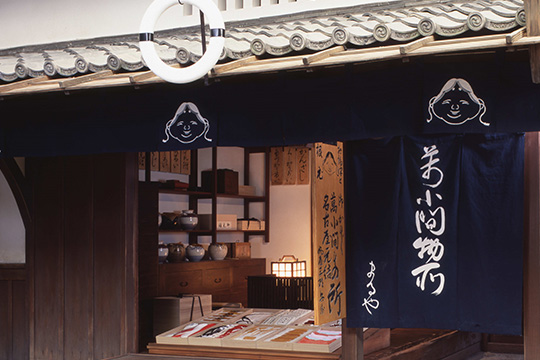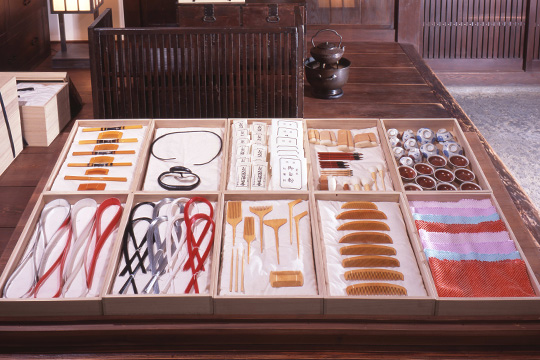Osaka Museum of Housing and Living 9th floor
Exhibition Hall 1: Osaka in the Early Modern Period
Time travel back to Edo Period
2. Tategu-ya Joinery/Cabinetmaker Store・Komamono-ya Fancy Goods and Cosmetic Store
<Tategu-ya Joinery/Cabinetmaker Store>
Tategu-ya joinery/cabinetmaker store on the left sold fittings such as doors, shōji paper-screen sliding doors, fusuma paper-covered sliding doors and ranma decorative transoms as well as decorative furniture such as byōbu decorative folding screens and tsuitate partitioning screens.


Since dimensions of various residential fittings were standardized in Osaka, they could be mass-produced and were, therefore, sold relatively cheap.
The store sign sticking out of the eaves shows the store’s crest that is modelled on “moon and star”.
<Komamono-ya Fancy Goods and Cosmetic Store>
Komamono-ya fancy goods and cosmetic store on the right sold cosmetics and hair ornaments for women.
Displayed in the storefront are oshiroi face powder, kushi combs, kōgai knife-like tortoise-shell combs, kanoko dresser pouches, and so on.


The contents in the pots sitting on the shelf on the left are kami-abura hair-dressing oil, which was sold by measure in the pot that each customer brought to the store.
The donut-shaped store sign hanging from the eaves imitates motoyui hair-tie for hairdressing, which was common for all the fancy goods and cosmetic stores.
The machiya shophouses of tategu-ya joinery/cabinetmaker store, and the komamono-ya fancy goods and cosmetic store follow the nagaya-date row house style and are housed in a single building.
Hence, the two machiya shophouses have an identical external appearance and floor plan.
